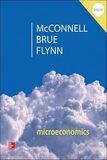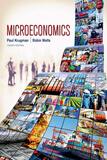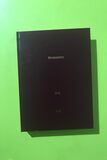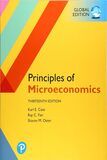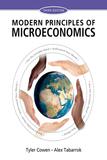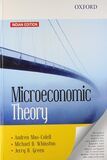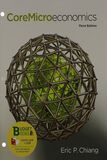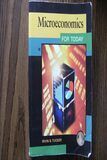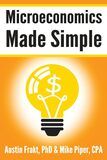10 Best Microeconomics Books [2025]
- Principles of Microeconomics (Mankiw's Principles of Economics) (Get this book)
- Microeconomics: Principles, Problems, & Policies (McGraw-Hill Series in Economics) (Get this book)
- Microeconomics (Get this book)
- Microeconomics: Theory and Applications with Calculus (The Pearson Series in Economics) (Get this book)
- Principles of Microeconomics (Get this book)
- Modern Principles: Microeconomics (Get this book)
- Microeconomic Theory (Get this book)
- Core Microeconomics (Get this book)
- Microeconomics for Today (Get this book)
- Microeconomics Made Simple: Basic Microeconomic Principles Explained in 100 Pages or Less (Get this book)
It is the little things that matter most. In Economics also, the same concept rings true. Micro-factors are as important for a business owner/student as macroeconomics.
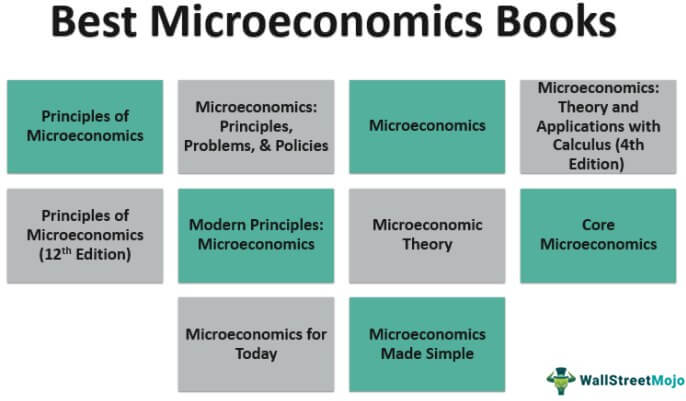
#1 - Principles of Microeconomics (Mankiw's Principles of Economics)
by N. Gregory Mankiw
This Principles of Microeconomics is the most widely used textbook in the class. So, If you are a student, grab this book as your textbook.
Book Review:
If you want to learn the fundamentals of microeconomics, this book would be invaluable to you because this does not include anything that a layperson will not understand! Pick this microeconomics book, highlight the areas that most resonate with you, and then note down any thoughts you have about the same. The language of the book is also pretty easy, and you do not need to stumble everywhere to understand a chapter. That means you will not find any excessive words to impress anyone. The author has explained the concepts, tools, and techniques most lucidly. That is why every reader who has gone through this book has got immense value. The readers' verdict is that if you are new to microeconomics, this is the book you should buy and read through. This best microeconomics book is arranged in short chapters, and the author has given much graphical representation of what he is talking about. As a result, even a dry subject like microeconomics will also seem fascinating to you. What more can you expect from an elementary book?
Key Takeaways
- No wonder why this best microeconomics book is meaningful to every microeconomics student and why most students choose this book as their first textbook in their undergraduate days. The author is a great writer and the most influential economist. And he has used all of his experience in writing this book.
- Along with the book, you will also be able to get the help of MindTap, which includes a graph builder and adaptive test prep to understand and master the subject.
#2 - Microeconomics: Principles, Problems, & Policies (McGraw-Hill Series in Economics)
by Campbell McConnell, Stanley Brue, and Sean Flynn
This book has been a perfect ally for students for a long time.
Book Review:
If you ever need to read a book for a class, this book will serve the purpose. Why? Because this book is arranged so that you do not need another textbook for class! This book has 20 chapters, including a chapter called "behavioral economics." Not many books have mentioned the importance of behavior in microeconomics. But this one helps students think about microeconomics in a completely different way. This book is not only applicable for students who are pursuing their studies; it is also useful for those who want to instruct and need a solid guide to teach students. The learners can master the digital content easily and would be able to supplement their learning in their exams and elsewhere. You can also read this textbook to save time and grasp microeconomics concepts as business owners.
Key Takeaways
- This best microeconomics book also comes up with an integrated learning system, "Connect," which continuously empowers students to provide what they need, whenever and however they need it. This system will help you become adaptive to the classes you attend.
- This book is for all – students, instructors, and business owners. And anybody who reads this book gets immense help from this book.
#3 - Microeconomics
by Paul Krugman and Robin Wells
If you want to read microeconomics the most simplistically, this is it.
Book Review:
No matter what you do – you study in an undergraduate program, run a business, or maybe want to learn every possible concept one can know in microeconomics; this book would be the ultimate textbook you would ever need. The students who have read this microeconomics textbook have mentioned that this book allowed them to get A's in microeconomics without putting in a lot of effort. Readers who have not had many ideas about business or have never taken a business class also remarked that this book is easy to follow and learn the fundamentals well. The authors have not used jargon or excessive words to teach the course. Simple, down-to-earth explanations and fun learning are the basic ingredients of the book. Do not look for any other book to make learning exciting and quickly master the fundamentals. Just buy this book, and you can take advantage of the book's amazing quality. Moreover, you can ask your instructor to use this book as well.
Key Takeaways
- Microeconomics is not rocket science. And you do not need to be a genius to understand it. Both of these authors have proved it in this book.
- One should write every textbook so that it satisfies every new learner. That means every textbook should be user-friendly and increase the learners' interest in the subject. This book does a great job making microeconomics most palatable to its students.
#4 - Microeconomics: Theory and Applications with Calculus (The Pearson Series in Economics)
by Jeffrey M. Perloff
If you want to refer to the fundamentals of microeconomics with real-life examples, read this book.
Book Review:
This microeconomics book is self-explanatory. Whatever it has promised to deliver, it has provided. Moreover, you get loads of real-life examples and the author's insights and humor in the footnotes. But remember, this book is not for those looking to learn microeconomics from scratch. It is not a book for beginners. Rather, once you have some basic idea about the fundamentals of microeconomics, you can pick this book up and advance your understanding. To understand the material of this book, you also need to comprehend derivative and integral calculus. So, do not touch this book without first reading beginner's books on microeconomics and mathematics. The only pitfall of this book (which may not be a pitfall for you) is the way it is presented. The book has not been written like a microeconomics textbook; rather, it is written like a mathematics book. As this book emphasizes calculus and its relevance to microeconomic concepts, it is written like that. If you love good humor, great examples, and amazing quotes, this book should certainly be under your "to-read" list.
Key Takeaways
- The book is very cheap if we consider the value it provides. This book is around 800 pages and costs around $20- $25. Yes, price does not refer to amount, but learning so many things under $20 is certainly a boon for every student.
- If you choose to buy this book with MyEconLab (you should), your knowledge and skill-building will be complete. You would get a structured environment for learning, can practice what you learn, test your understanding of the concepts, and study as per a personalized plan of study.
#5 - Principles of Microeconomics
by Karl E. Case, Ray C. Fair, and Sharon E. Oster
It is a perfect book for beginners of microeconomics who need no fluff and a sound understanding of fundamentals.
Book Review:
The book has received mixed reviews, but still, this book is not as bad as few reviewers proclaim. Here's why. First of all, most of the thoughts of this book are good so far. And few did not like the content of the book. Their dislike can reveal some information about this book – it is not for experts. The author did not write this book for people who want to teach or instruct. It is written for those who are currently new to the subject and do not grasp advanced mathematics. Grab this book if you want to learn the concepts of microeconomics from scratch and do not bother much about the mathematical implications of the fundamentals. It is for newbies, but that does not mean it is gibberish and does not make sense. No, this book is full of practical examples and also includes recent events so that the new learners can relate the concepts to real life.
Key Takeaways
- This best microeconomics book is not written only based on the authors' experience. Rather, every concept presented in this volume has been thoroughly researched. This book also comes with the added exercise which will make readers understand the art and science of microeconomics.
- This book also comes with MyEconLab, which you should purchase along with the book because MyEconLab will give you a structured environment, improve your understanding of each concept, and help you practice more efficiently.
#6 - Modern Principles: Microeconomics
by Tyler Cowen and Alex Tabarrok
It is another great book to understand the nitty-gritty of microeconomics.
Book Review:
How do individuals learn better? It is found that when they are learning visually, they know the best. In this book, the authors have used visuals so that even a dry subject like microeconomics stood out as one of the most interesting subjects. Grab this book and know how well the visuals and texts are arranged. Again, this book is pretty good for beginners and people new to microeconomics concepts. If you are a student starting your course in microeconomics, this is the "go-to book" for you. Besides the visuals and texts, this book has been arranged in easy-to-understand chapters so that you do not need to go back and forth to comprehend a particular topic. You can follow along and learn the concepts, insights, and fundamentals. You will also get many real-life examples from this book that you can relate to and understand better. You will also be able to apply the learning in your own personal and professional life.
Key Takeaways
- The authors are well-known online teachers of Economics. If you buy this microeconomics textbook, you will get integrated videos made by these economics teachers, which will also help you learn and master the concepts.
- As a subject, you will relate to politics, businesses, world affairs, and everyday life once you finish reading this book. The authors also run a blog marginalrevolution.com which you can read along with the book.
#7 - Microeconomic Theory
by Andreu Mas-Colell, Michael D. Whinston, and Jerry R. Green
They say "old is gold," and this book perfectly fits that proverb.
Book Review:
This book is "the guide" on microeconomics. And that means you should not start with this book if you are new to microeconomics. Before reading this book, read one or two books on the aforementioned fundamental concepts. And then come back to this book. Why so? Because this book is so intense in concepts and explanation, they would not make sense to you immediately. This book is used at the University of Michigan for a full year to teach Ph.D. students microeconomic theory. This book will not teach you intuitions; rather, this book will teach you concepts and fundamentals so that you can publish your papers in prestigious journals in years to come. The scope of this book is huge, which enabled the authors to focus totally on the helicopter view of the concepts. But do not try to study this book all by yourself. If you are an economist or have already earned your Ph.D., you still can. But if you are learning the ropes of microeconomic theory, take help from a professor to teach you the concepts of this book. This book is also equally beneficial for teaching microeconomics in schools and colleges.
Key Takeaways
- If there is any textbook every economics student must read, it is this. You cannot skip this book to understand microeconomic theory fully.
- This best microeconomics book is divided into five sections: individual decision–making, game theory, partial equilibrium analysis, general equilibrium analysis, and social choice theory and mechanism design. If you read these five sections well, you will possess a wealth of knowledge in microeconomic theory.
#8 - CoreMicroeconomics
by Eric Chiang
This book is a perfect textbook for students trying to learn microeconomics.
Book Review:
This top microeconomics book is not easy for students who are new to microeconomics concepts because it is dense and full of microeconomic concepts! Before reading this book, take one beginners' book from the above list, give it a light read, and use the material of this book as supplementary content. Many students using this book for their class have mentioned that it has helped them pass the class and been quite helpful during the course. The author brings in a lot of new topics in microeconomic theory. That means this book does not only contain the fundamentals of microeconomics; it also includes the latest trends, modern microeconomic ideas, and materials on how to teach them to students. Along with students, this book can also be used by instructors who teach microeconomics to their students. If you can read this book and a beginner’s material on the subject, it will become the most valuable resource.
Key Takeaways
- This microeconomics book is over 500 pages and is very comprehensive. However, it is not recommended for beginners because they will not understand its dense outlook on the subject.
- The author has extensive experience teaching economics courses, and he has put all of his teaching experiences into this book. Only a teacher can put himself in the students' shoes and think from their perspective. And the book is written exactly like that. No wonder this is one of the most popular microeconomics textbooks.
#9 - Microeconomics for Today
by Irvin B. Tucker
This book stands out in the series of books on microeconomics. Here’s why.
Book Review:
Many textbooks on microeconomics claim a lot but deliver quite the opposite. But this book has no gap between what it promised and what it offered. Rather, if we compare it with contemporary microeconomics textbooks, this is what every new student of economics should read. This book is easily written, but it will also help you stretch your vocabulary, concepts, perspectives, and understanding. Thus, you waste no time browsing through the book. On the side of each chapter, you will get a list of vocab words used in the chapter. In addition, at the end of each chapter, you will be able to recapitulate the entire concept of the chapter through a summary and a practice test. This best microeconomics book, thus, is written preferably for students who want to pass their course and understand the fundamentals at the same time. This book can also be useful for people who teach microeconomics because setting up questions papers becomes very easy once you go through this book. Finally, as business owners, you can also read the book.
Key Takeaways
- You will not only get the whole book filled with microeconomic theory, but you will also get a rich resource for instructors (a CD for instructors, power-point slides, complete videos, and a link to the website).
- As the title suggests, it not only talks about the old microeconomic theory; it also focuses on new trends, modern microeconomics, and the pedagogy of teaching them.
#10 - Microeconomics Made Simple: Basic Microeconomic Principles Explained in 100 Pages or Less
by Austin Frakt and Mike Piper
This book is a great supplementary book on microeconomics, over 100 pages.
Book Review:
It is not spam, and we did not include this book in the list by mistake. Now and then, when you recapitulate the microeconomics concepts, you need a handy guide to refresh what you have already read. This best microeconomics book is written just for that. All can use this book to brush off their knowledge base, from students to instructors to teachers to business owners. It is useful for two types of people: professionals who need something to read through quickly because their jobs require it (and they do not have any knowledge of economics so far) and people who are pretty busy in their professional/personal life and have little/no time for studying microeconomics. The book's authors have taken out all the flab and presented the concepts in 134 pages. This book is not recommended if you need a textbook for your studies. But it can be a great supplement for you, along with a microeconomics textbook.
Key Takeaways
- Short is sweet and easily digestible. Pick this book up, read through it, and go for your exam. Reading this book and passing an exam (if you have little time to read) are almost synonymous.
- You will never get overwhelmed with details. Leave that for the textbooks. If you want a concrete, crisp, and solid book presenting distilled information on microeconomics, you should pick up this book.
AMAZON ASSOCIATE DISCLOSURE
WallStreetMojo is a participant in the Amazon Services LLC Associates Program, an affiliate advertising program designed to provide a means for sites to earn advertising fees by advertising and linking to amazon.com

